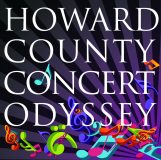If you’re in the mood for music with some pep, ragtime will never disappoint. There’s just something about that syncopated rhythm that gets the blood pumping!
The so-called King of Ragtime, Scott Joplin, was quoted in 1913 as saying that ragtime had a long history in the U.S. – that there had been “ragtime music in America ever since the Negro race has been here, but the white people took no notice of it until about twenty years ago [in the 1890s].”
Commercially, however, the style peaked in popularity in the late 1800s to early 20th century. Named for its ragged rhythms, ragtime proved infectious and spread across the continent primarily from the southern and midwestern U.S.
Ragtime’s popularity faded as jazz hit the music scene, and it had nearly been forgotten by 1920. Fortunately for us, it experienced a revival in the 1950s, when a number of musicians put out ragtime recordings and created new compositions. And it gained considerable attention again in the 1970s, after a compilation of Joplin’s work was nominated for a Grammy Award, and the movie “The Sting” reintroduced ragtime to a broad audience.
Scott Joplin’s “The Entertainer” is generally considered the best-known composition in the genre. Our local ragtime great was Eubie Blake, born and raised in Baltimore. He wrote his first ragtime piece, the “Charleston Rag,” when he was just 16 years old. He went on to write about 300 songs – including “I’m Just Wild About Harry” – in addition to five Broadway shows.
You can also get to know ragtime through the compositions of James Johnson, James Scott and Jelly Roll Morton (among many others!).

